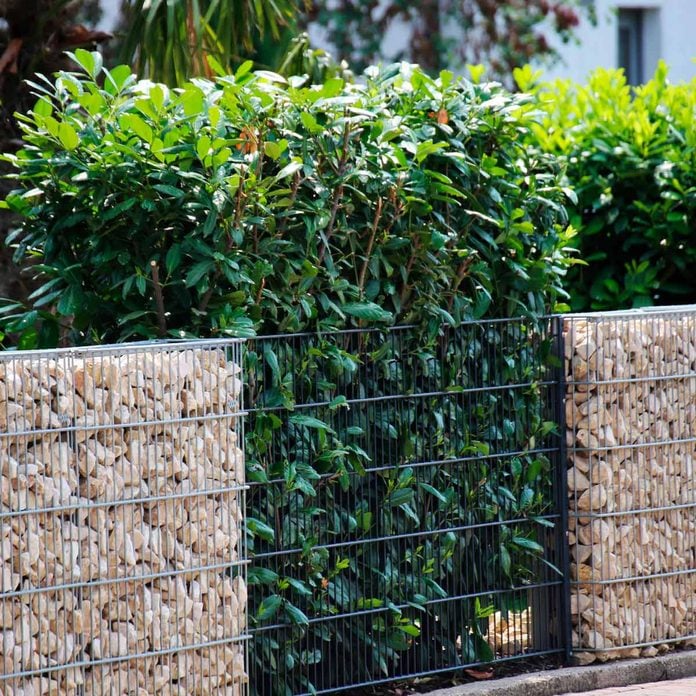
The Wall
Make a gabion wall by wrapping river rock in a cage of galvanized steel wire. A retaining wall can be used for erosion control, privacy or to make an aesthetic statement in the landscape.
Here’s how to make beautiful steppingstones with river rock.
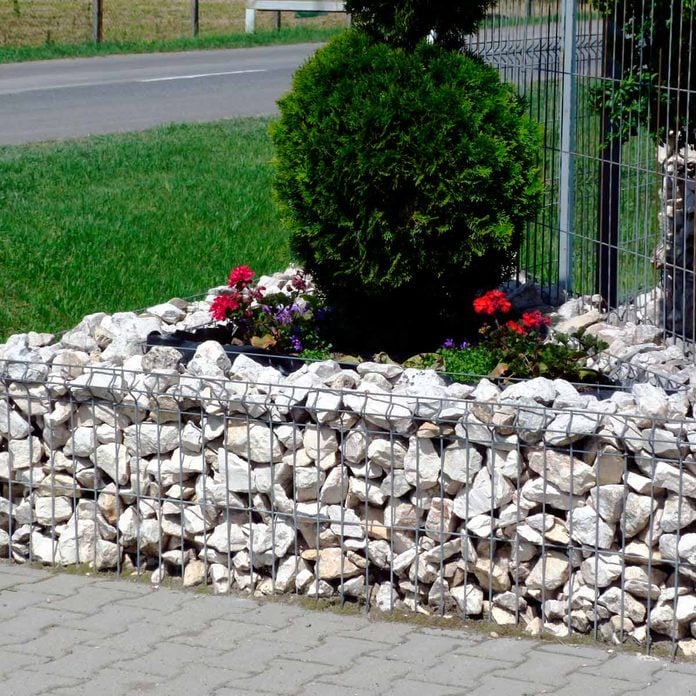
Raised Bed Planter
For a slightly different take on a gabion wall, consider a raised bed planter made with river rock. It’s not only attractive and unique, it also drains well. To keep soil from seeping, line the interior with landscape fabric before filling with a mix of lightweight potting mix and compost.
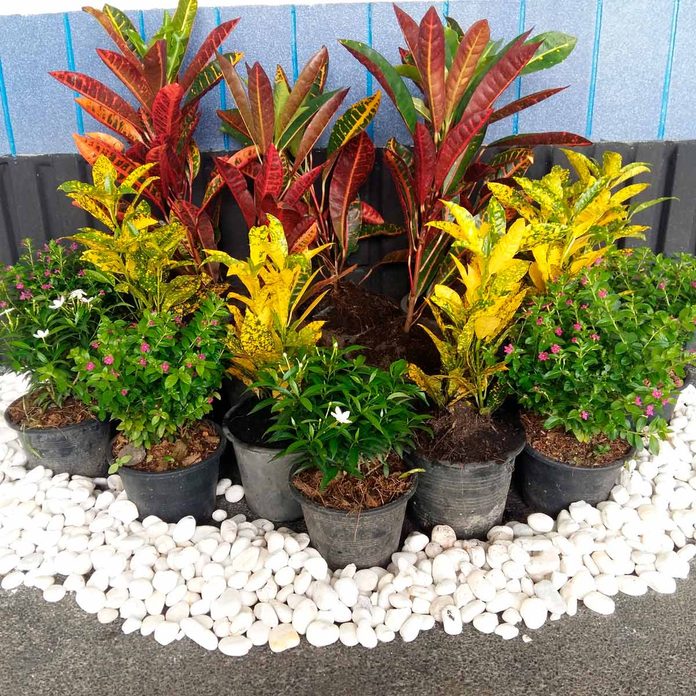
Suitable Staging
Use a floating “moat” of river rock to hem in a collection of potted plants. The rocks act as a stage, calling attention to the multiple pots and presenting them as one cohesive unit. Side benefit: rocks keep the planters from tipping over.
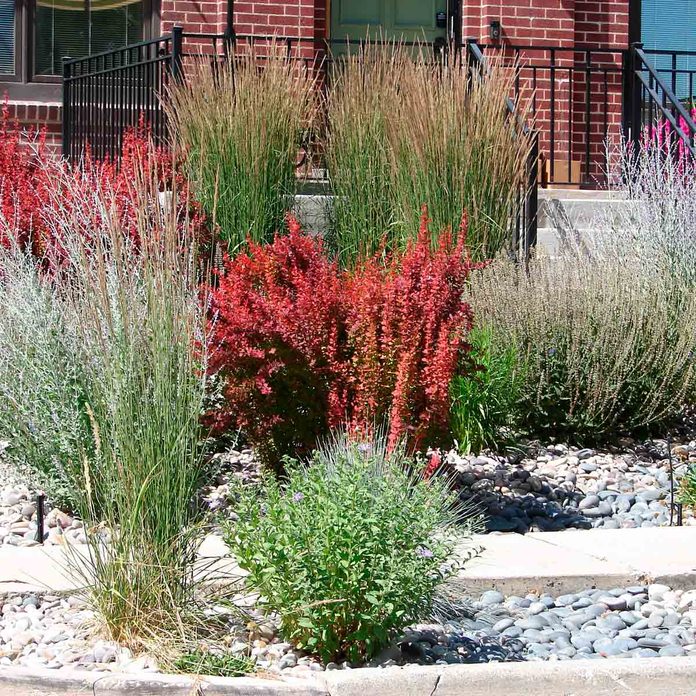
Dapper Dryscaping
River rock landscaping ideas often revolve around water—or in this case, the lack thereof. River rocks are a perfect complement to the drought-tolerant plants found in xeriscaping, making a fine, quick-draining mulch that looks at home with dry denizens such as barberry, Russian sage, Karl Foerster grass, blue oatgrass and salvia.
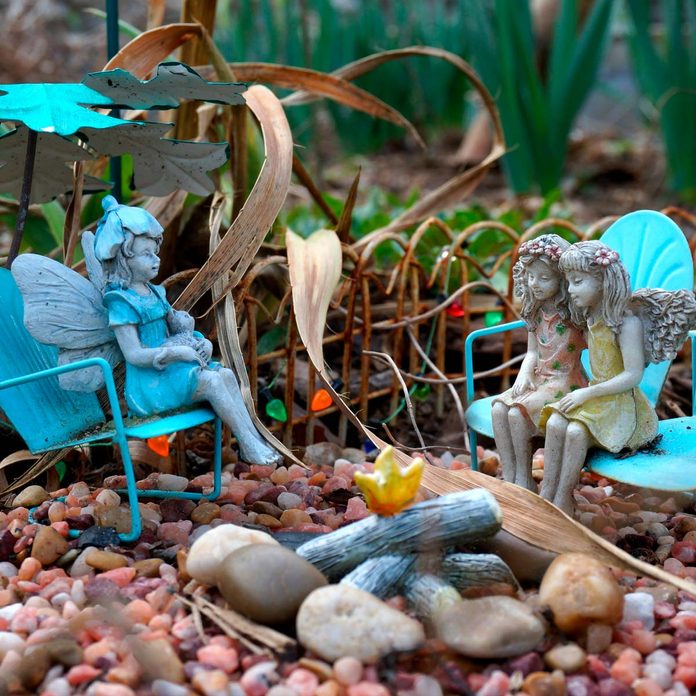
Fairy Fire Pit
Fairy gardens are hot. River rocks and smaller pea gravel are indispensable when creating the miniature landscapes. Here they’re combined to form a make-believe campfire. Ah, you can almost smell the smoke! See our collection of 15 breathtaking DIY fairy gardens.
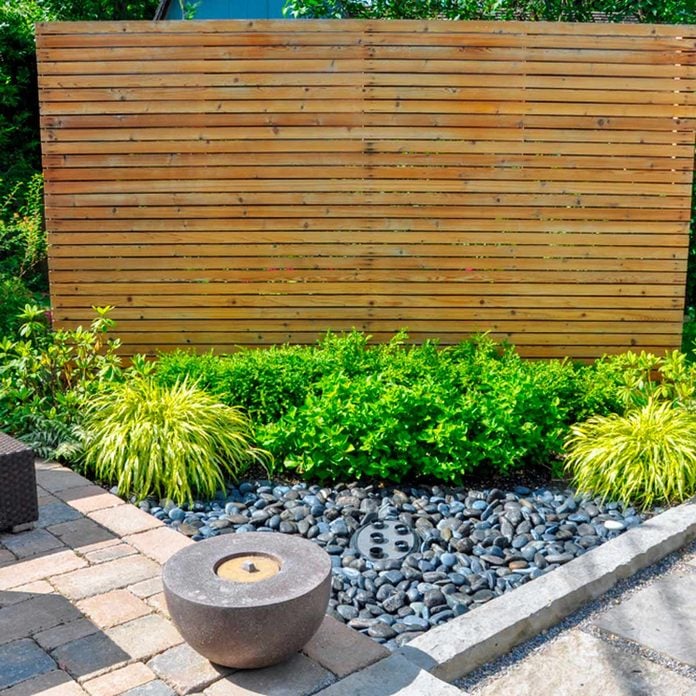
Negative Attitude
In landscaping, just like in design, there’s something called negative space. It is visual “breathing room” where the eye can rest and not be overwhelmed by stuff—whether it’s color, form or, in this case, a circus of plants. Notice how the river rock provides valuable negative space in this small garden, giving the garden art in the foreground some distance from the planting. Learn pro garden design strategies here.

Mulch Appeal
River rock makes a great, long-lasting mulch. It looks particularly natural with succulents and cacti and provides the rapid drainage those plants require. It does hold heat, however, so river rock may not be the best mulch for more tender plants. Check out these 14 tips for growing succulents outside.
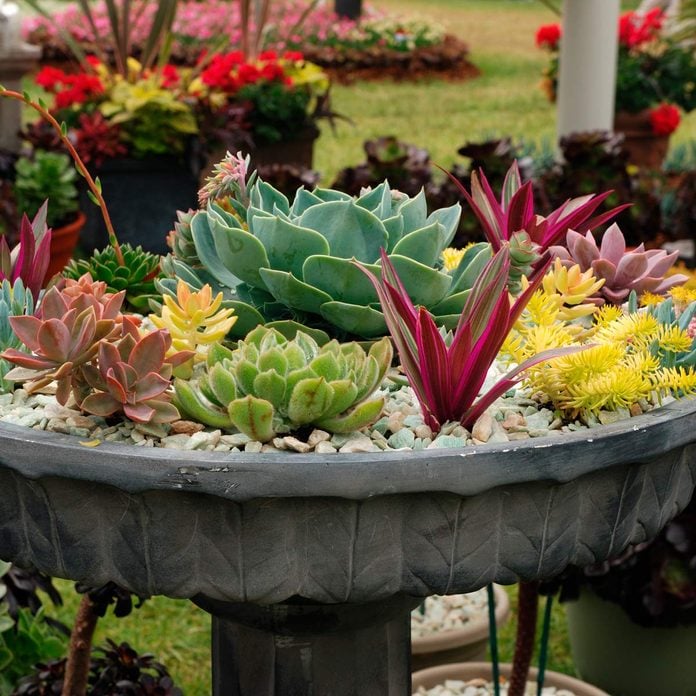
Planter Presentation
That mulching ability carries over to planters as well. River rock gives a nice, clean presentation and even some contrast with the plants. It also keeps foliage free from soil splashing while watering. Avoid watering pitfalls. Build your own self-watering planter.

Paver Patchwork
If you have a spot in your yard where nothing but weeds will grow, you can create a great-looking area that doesn’t need maintenance. Alternate pavers and river rock in a patchwork (grid) pattern and never worry about that trouble spot again. Here are some other landscape uses for rocks.
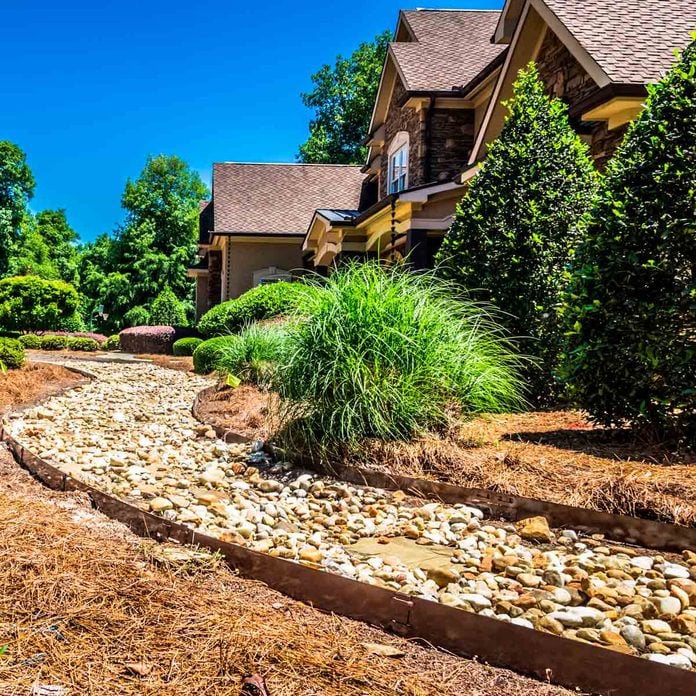
Rocky Road
With their durability, rocks are a natural for pathways. The winding shape of the pathway teams with the intriguing texture of the river rocks to create an attractive landscape feature. Here are more affordable garden path ideas.
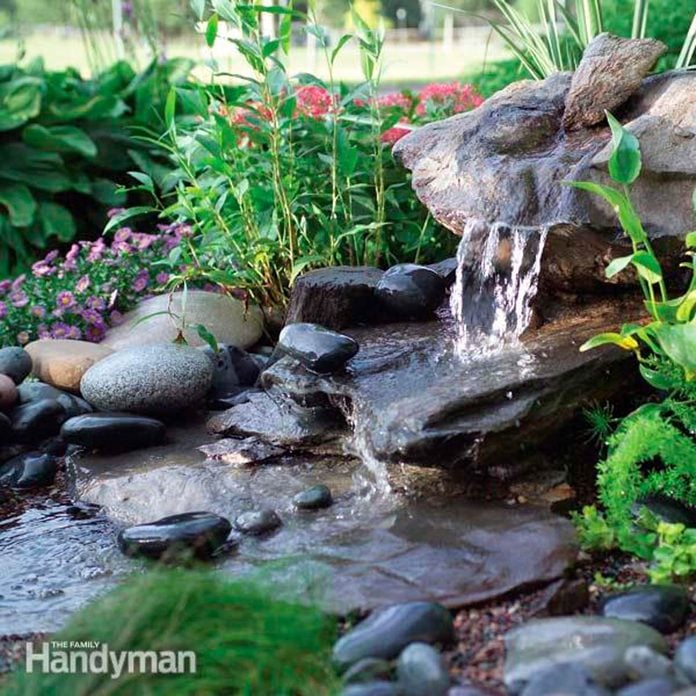
Natural Water Feature
You can build this beautiful artesian river rock and stone fountain in just two days. And once it’s built, you don’t have to worry about maintenance. The complete how-to-build-it instructions are available here.
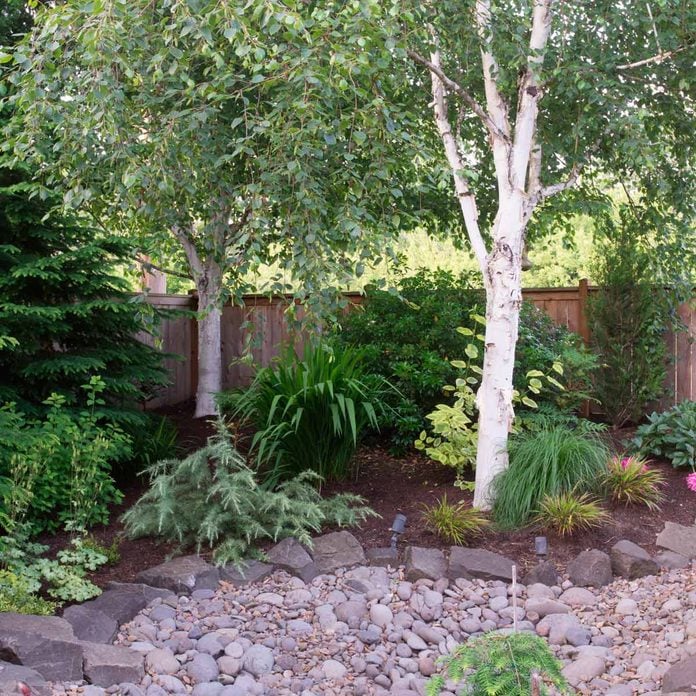
Dry Creek Bed
Probably the No. 1 use of river rock in a landscape is equal parts practical and pretty. A dry creek bed is an ornamental feature much of the time. But when heavy rains come, the winding bed of river rocks directs the overflow wherever you want it to go (for instance, away from the house and toward a rain garden). Learn how to build your very own rain garden.